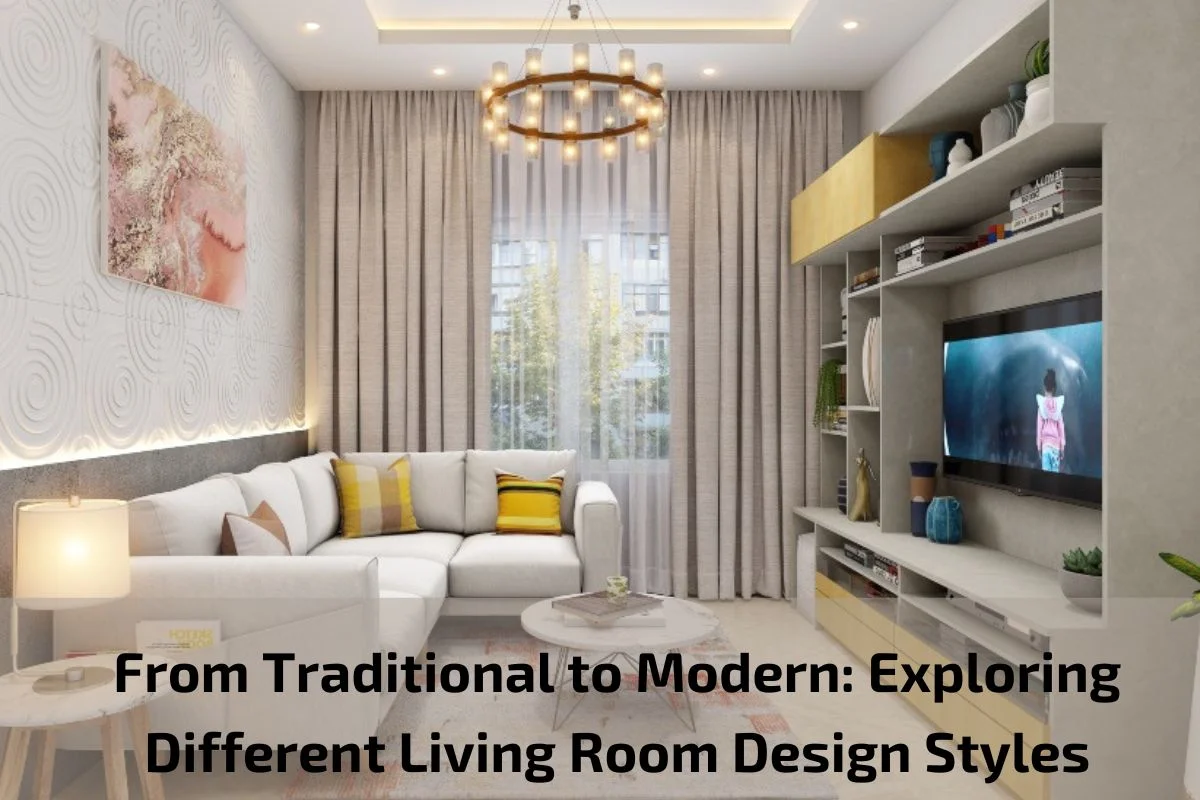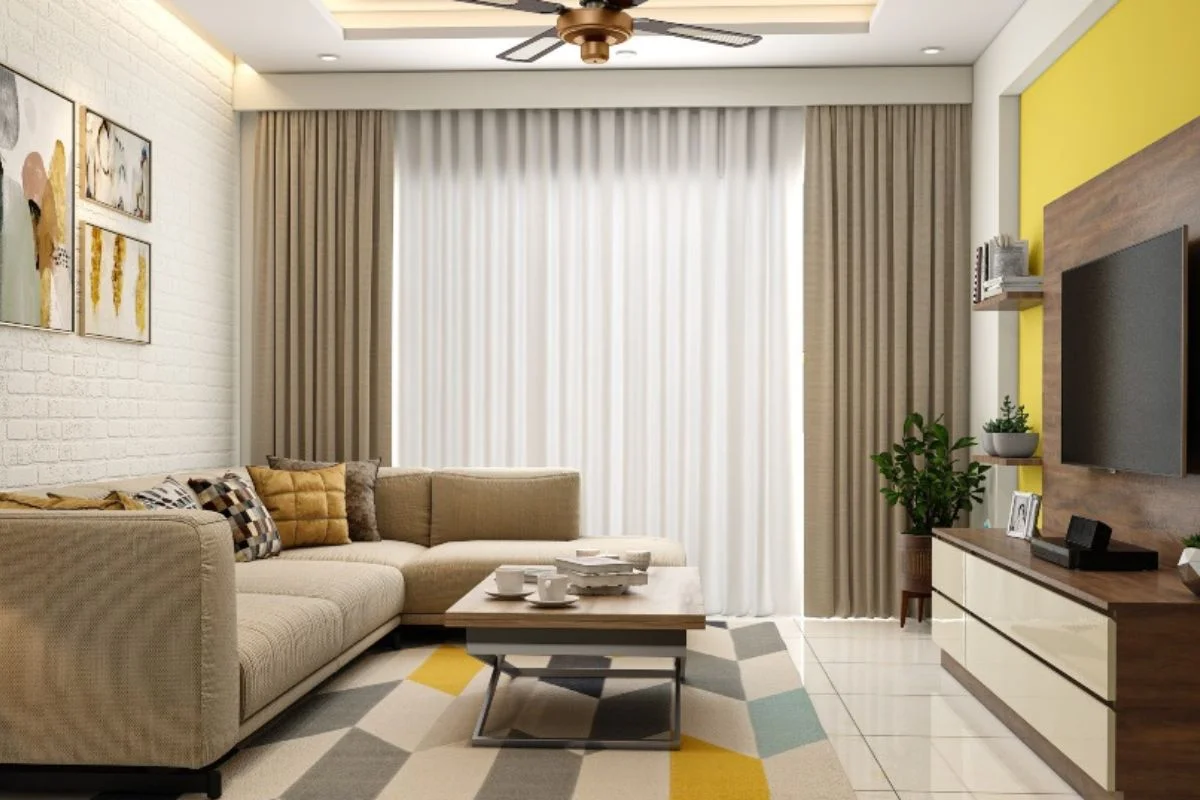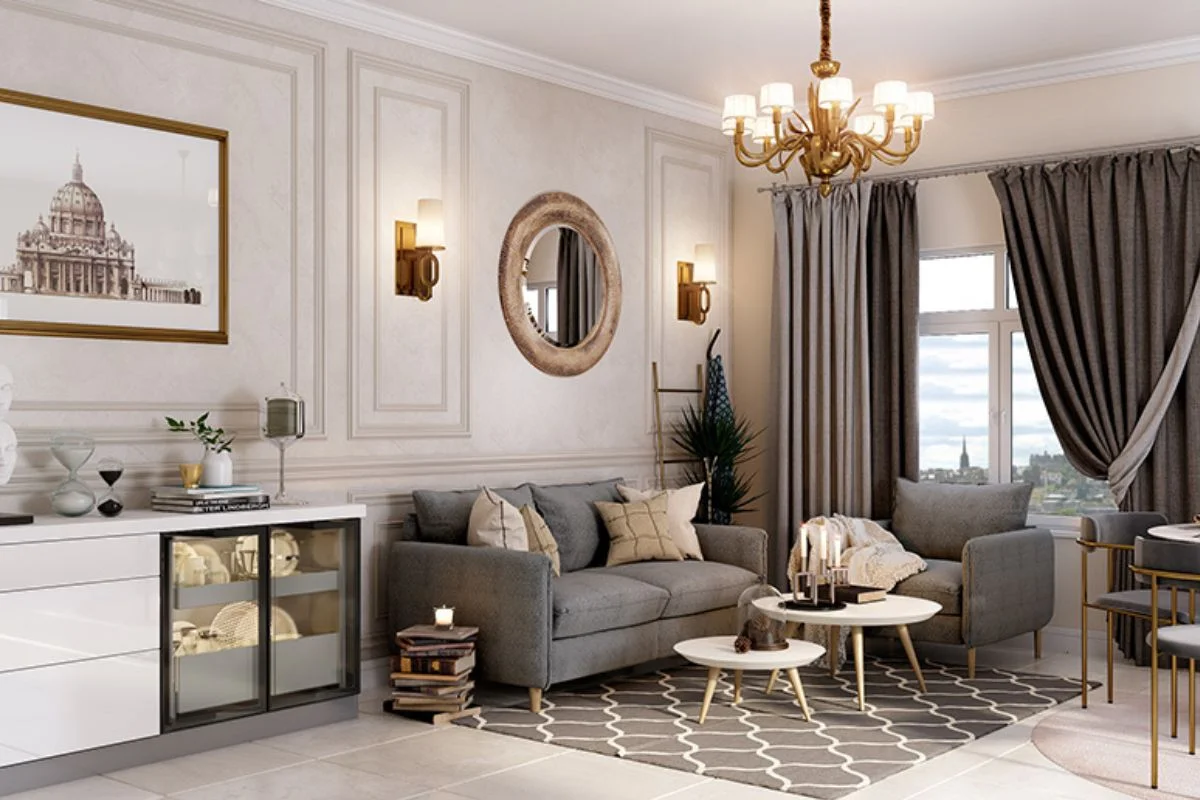Your living room is the heart of your home, a space where family and friends gather to relax, socialize, and create cherished memories. As such, its design plays a crucial role in setting the tone and ambiance of your living environment. Whether you lean towards timeless elegance or contemporary chic, there’s a design style to suit every taste and preference.
In this guide, we embark on a journey through the diverse landscape of living room design styles, from the classic allure of traditional decor to the sleek sophistication of modern aesthetics. Each style brings its own unique character, reflecting different eras, cultures, and design philosophies.
Join us as we delve into the nuances of each design style, exploring their key features, elements, and inspirations. Whether you’re drawn to the opulence of classic design or the clean lines of contemporary minimalism, this guide will provide you with insights and inspiration to help you craft a living room that perfectly reflects your personal style and vision. Let’s embark on this exploration of living room design, where tradition meets modernity in a harmonious blend of beauty and functionality.
Brief overview of the importance of the living room interior design in a home
Certainly! Here’s a brief overview of the importance of living room interior design in a home:
The living room serves as the heart of any home, acting as a central space for relaxation, socialization, and entertainment. Its interior design plays a crucial role in shaping the ambiance and functionality of the entire household. A well-designed living room not only enhances the aesthetic appeal of the space but also contributes to the overall comfort and well-being of its inhabitants.
From selecting the right furniture pieces to choosing the perfect color scheme and lighting fixtures, every aspect of living room interior design is carefully curated to create a welcoming and inviting atmosphere. Additionally, the layout and spatial arrangement of furniture can significantly impact the flow and functionality of the room, ensuring that it serves its intended purpose effectively.
Whether it’s hosting gatherings with friends and family, enjoying quiet evenings curled up with a book, or simply unwinding after a long day, the living room provides a versatile environment for various activities. Therefore, investing time and effort into designing this space according to personal preferences and lifestyle needs can transform it into a true sanctuary within the home. Ultimately, a thoughtfully designed living room not only reflects the homeowner’s style and personality but also fosters a sense of comfort, cohesion, and joy for everyone who enters.
Trends in Living Room Interior Design
Certainly! Here are some current trends in living room interior design:
Minimalism with Warmth: Minimalistic designs with warm, inviting elements like plush rugs, soft throws, and natural textures. It’s about creating a cozy atmosphere without clutter.
Biophilic Design: Integrating nature into the living space with indoor plants, natural materials like wood and stone, and large windows to bring in natural light.
Multifunctional Furniture: Furniture that serves multiple purposes to maximize space in smaller living rooms. For example, a coffee table with built-in storage or a sofa that can be converted into a guest bed.
Statement Lighting: Unique light fixtures that serve as focal points in the room, such as oversized pendant lights, sculptural floor lamps, or elegant chandeliers.
Mixing Textures and Patterns: Combining different textures like velvet, leather, and linen with varied patterns such as geometric shapes or floral prints to add visual interest and depth to the space.
Bold Colors and Accents: While neutral color palettes remain popular, there’s also a trend towards incorporating bold colors like deep blues, rich greens, or burnt oranges as accent colors to add personality to the room.
Smart Technology Integration: Incorporating smart home technology seamlessly into the design, such as voice-controlled lighting, automated window treatments, or entertainment systems.
Cozy Nooks and Reading Corners: Creating intimate spaces within the living room for relaxation and reading, with comfortable armchairs, floor cushions, and well-stocked bookshelves.
Artisanal and Handcrafted Pieces: Embracing artisanal craftsmanship and unique handcrafted furniture or decor items to add character and a sense of authenticity to the space.
Vintage and Retro Touches: Mixing vintage or retro furniture and decor pieces with modern elements to create a timeless and eclectic look.
Budget-Friendly living room interior design Tips
Of course! Here are some budget-friendly living room interior design tips:
DIY Projects: Embrace do-it-yourself projects for decor and furniture. You can repurpose old furniture with a fresh coat of paint, create your own artwork, or make decorative items like throw pillows or curtains.
Thrifting and Secondhand Shopping: Explore thrift stores, flea markets, and online marketplaces for affordable furniture and decor pieces. With a bit of patience, you can find unique items at a fraction of the cost of new ones.
Shop Sales and Clearance: Keep an eye out for sales, discounts, and clearance events at furniture stores and home decor retailers. You can score great deals on quality items by timing your purchases strategically.
Repurpose and Upcycle: Get creative with repurposing items you already own or find inexpensive items to upcycle. For example, use crates as coffee tables, old doors as wall art, or mason jars as candle holders.
Focus on Key Pieces: Invest in a few key pieces of furniture that will anchor the room, such as a comfortable sofa or a stylish area rug. Then, complement these pieces with budget-friendly accents and accessories.
Use Paint Wisely: Paint is one of the most affordable ways to transform a space. Experiment with different paint colors to create visual interest or add an accent wall for a pop of color without breaking the bank.
Opt for Multifunctional Furniture: Choose furniture pieces that serve multiple purposes to maximize functionality in your living room. For example, a storage ottoman can double as extra seating and provide storage space for blankets or magazines.
Focus on Lighting: Good lighting can enhance the ambiance of your living room. Invest in affordable lighting options such as floor lamps, string lights, or LED candles to create a warm and inviting atmosphere.
Accessorize Strategically: Add personality to your living room with inexpensive accessories like throw pillows, blankets, vases, and decorative objects. These small touches can make a big impact on the overall look and feel of the space.
Declutter and Rearrange: Sometimes, all it takes to refresh a living room is decluttering and rearranging the existing furniture and decor. Clear out unnecessary items, reorganize shelves and surfaces, and experiment with different furniture layouts to breathe new life into the space.
Popular Living Room Design Styles
Here are some popular living room design styles:
Modern: Characterized by clean lines, minimalism, and a focus on open spaces. Modern living rooms often feature neutral color palettes, sleek furniture designs, and an emphasis on functionality.
Contemporary: Similar to modern design but with a more fluid and ever-evolving approach. Contemporary living rooms may incorporate bold colors, eclectic furniture pieces, and a mix of materials like metal, glass, and wood.
Traditional: Inspired by classic European designs, traditional living rooms are elegant and timeless. They typically feature rich colors, ornate furniture with curved lines, intricate patterns, and decorative details like moldings and trimmings.
Transitional: A blend of traditional and contemporary styles, transitional living rooms offer a balanced mix of classic and modern elements. They often feature neutral color palettes, comfortable yet sophisticated furniture, and simple, clean lines.
Rustic: Inspired by rural and natural elements, rustic living rooms embrace a cozy and inviting aesthetic. They often incorporate natural materials like wood and stone, earthy colors, vintage furniture pieces, and cozy textiles like wool or fur.
Industrial: Inspired by urban lofts and warehouse spaces, industrial living rooms have a raw and unfinished look. Exposed brick walls, concrete floors, metal accents, and utilitarian furniture characterize this style, along with a neutral color palette and minimalist decor.
Scandinavian: Known for its simplicity, functionality, and emphasis on natural light, Scandinavian living rooms are bright, airy, and cozy. They feature light-colored walls, minimalist furniture, clean lines, natural materials like wood and wool, and a few pops of color through accessories.
Bohemian: Eclectic and free-spirited, bohemian living rooms embrace a mix of patterns, colors, and textures from around the world. They often feature layered textiles, vintage furniture, global-inspired decor, and an eclectic mix of art and accessories.
Coastal: Inspired by beachside living, coastal living rooms evoke a relaxed and breezy atmosphere. They typically feature a palette of blues and whites, natural materials like rattan and wicker, nautical decor accents, and plenty of natural light.
Mid-Century Modern: Inspired by the design trends of the mid-20th century, mid-century modern living rooms are characterized by clean lines, organic shapes, and a mix of materials like wood, plastic, and metal. They often feature iconic furniture designs, bold colors, and retro-inspired decor elements.
Key Elements of Living Room Interior Design
Certainly! Here are some key elements of living room interior design:
Furniture: The choice and arrangement of furniture are fundamental in defining the functionality and aesthetic of a living room. Key pieces often include a sofa or sectional, coffee table, armchairs, and storage solutions like bookshelves or cabinets.
Layout: The layout of the living room determines how the space is utilized and how traffic flows within it. Consider factors like focal points (e.g., fireplace, TV), seating arrangements, and pathways for movement when planning the layout.
Color Scheme: The color palette sets the tone for the living room’s ambiance. Choose colors that reflect your personal style and desired atmosphere. Consider factors like natural light, room size, and the mood you want to evoke when selecting colors for walls, furniture, and decor.
Lighting: Proper lighting is essential for functionality and ambiance. Incorporate a mix of ambient lighting (e.g., ceiling fixtures), task lighting (e.g., reading lamps), and accent lighting (e.g., wall sconces, spotlights) to create layers of light and highlight different areas of the room.
Textures and Patterns: Adding texture and pattern to the living room enhances visual interest and tactile appeal. Mix and match different textures like velvet, leather, and wool, and incorporate patterns through rugs, curtains, throw pillows, and upholstery.
Accessories and Decor: Accessories and decor items add personality and style to the living room. These can include artwork, decorative objects, rugs, throw pillows, plants, and other accents that complement the overall design theme and color scheme.
Rugs and Flooring: Rugs not only provide warmth and comfort but also anchor the furniture arrangement and define different zones within the living room. Choose a rug size and style that suits the scale of the room and complements the furniture and decor.
Window Treatments: Window treatments like curtains, blinds, or shades contribute to privacy, light control, and aesthetics in the living room. Select window treatments that enhance the overall design while also addressing practical needs like insulation and sunlight filtration.
Storage Solutions: Effective storage solutions help keep the living room organized and clutter-free. Consider incorporating built-in storage, shelving units, storage ottomans, or media consoles to store books, electronics, toys, and other items.
Personal Touches: Finally, don’t forget to infuse the living room with personal touches that reflect your interests, hobbies, and lifestyle. Display meaningful artwork, family photos, and mementos that add warmth and character to the space.
Conclusion
In conclusion, designing a living room involves careful consideration of various elements to create a space that is not only visually appealing but also functional and comfortable. From selecting furniture and arranging layouts to choosing colors, lighting, and accessories, each decision contributes to the overall ambiance and usability of the room.




